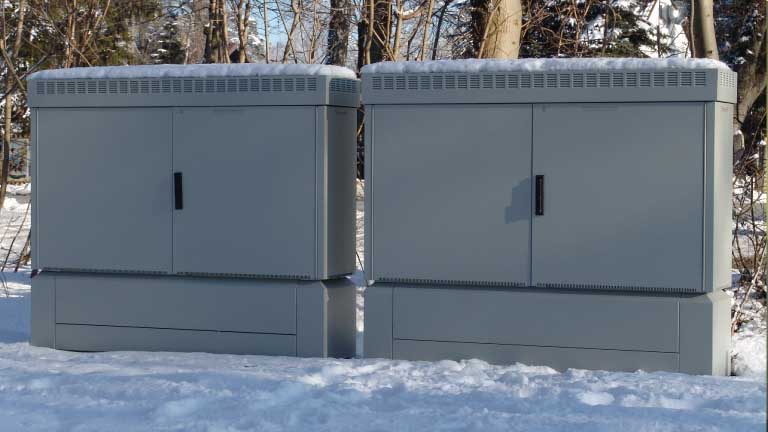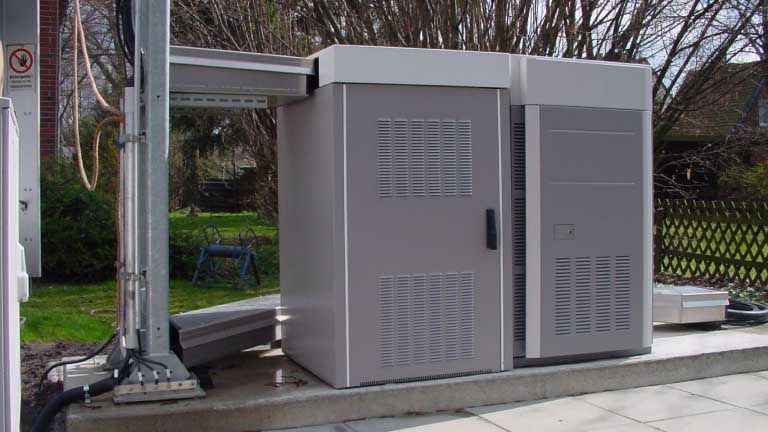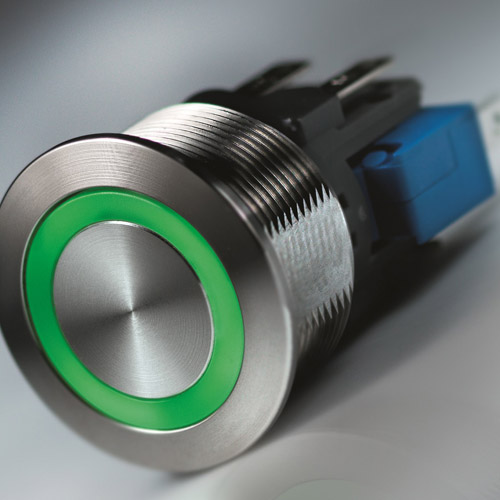Weather, corrosion and vandals: Protecting outdoor electronics

It may not seem like it, but simply being outdoors is rather a harsh environment for electronics to have to survive in. There are many threats to public infrastructure such as kiosks, ticketing machines and lifts, and telecoms and railway electronics that are housed in outdoor cabinets.
The weather is probably the greatest challenge for outdoor electronics. While extreme climates can produce tornadoes and earthquakes, even the relatively mild UK climate can destroy electronic components in a relatively short time if not sufficiently protected. Moisture ingress from rain, snow and the dreaded British fog can seep into joins in enclosures. Ice can form over air vents. And sunlight can cause searing temperatures inside cabinets if the cooling strategies are not well thought-out.
If cabinets are not specifically designed for outdoor use, corrosion can also result, which can lead to dangerous levels of moisture ingress. If left unchecked, corrosion can lead to big holes, which leave the cabinets unsecured to people and animals.
The human element is also a big danger to anything left outside, whether it’s designed for public use in an accessible place or even in restricted access areas such as trackside. Vandals and thieves can make short work of destroying cabinets, as well as damaging interface components like touch screens, buttons and switches. Unscrupulous customers may also try to interfere with telecoms broadband cabinets in order to enhance their service. And damage to railway trackside electronics can be extremely expensive to repair.
Luckily, there are many solutions available for protecting outdoor electronics.
Steady improvements in enclosure technology have led to the development of cabinets that can withstand the harshest weather conditions while keeping the electronics cool, safe and secure. A leader in this area is Schroff, which has three ranges of outdoor cabinets suitable for various applications. All three series are made from corrosion-proof aluminium and they are all protected against moisture and dust ingress to IP55.
All the Schroff outdoor cabinets come with a secure three-point locking system, which protects the electronics against vandalism. This system secures the cabinet door at the top, in the centre of the right or left and edge and at the bottom edge, which presents more of a challenge than single point locks do. Electrical door switches complete the locking mechanism.
The most basic of Schroff’s outdoor cabinet ranges is the Comline series. With lightweight single wall construction, these cabinets can be installed on walls, on poles or on the ground and they are ideal for transport and communications infrastructure. Two versions of the classic Comline cabinet exist:those that can be accessed through only the front door; and those that can be opened at the front and the back for better access to the electronics. Heat dissipation is through natural convection only.
A step up from the Comline series is the Unibody series of secure outdoor cabinets. These are double walled aluminium cabinets – the outer cladding is removable. Unibody cabinets can be cooled by heat dissipation through natural convection or, if the application requires it, forced air-cooling can be integrated. The Unibody VENT design includes a fan in the side panel to provide up to 35 W/K. And for the Unibody HEX design, a heat exchanger can be added to the cabinet door to provide forced cooling of up to 70 W/K.
 |
 |
Figure 1. Schroff Unibody cabinets in the field. (a) Meteorology cabinet. (b) Railway voltage monitoring cabinet.
As an example, Figure 1 shows Schroff Unibody cabinets being used in the field. Figure 1(a) shows a compact, robust cabinet used in a meteorology application to record data in strong winds and during thunderstorms. It’s mast mounted and its climate control is based on fan cooling – the fan is mounted between the dual walls – but there is an optional controllable heater that can be added for freezing conditions. Figure 1(b) shows Unibody cabinets used to monitor voltage on overhead cables in a railway application. These ones are wall mounted. Since the application requires only natural convection cooling, there’s no fan, which saves energy and reduces audible noise.
Schroff’s premium range of outdoor cabinets is the Modular design which, like the Unibody range, features double walled aluminium construction. However, in this case both the outer and inner cladding can be removed to access the electronics from all sides. Modular designs available include the Modular VENT option, which has a fan or fans assembled into the side panels capable of forced air cooling up to 35 W/K, and the Modular HEX option, which has an integrated heat exchanger in the door to provide up to 70 W/K of forced cooling. Modular cabinets are available in two widths – a single door version, which is 700 mm wide, and a double door version, which is 130 mm wide.
Figure 2 shows Schroff Modular cabinets in applications in the field. In Figure 2(a), two 130 mm wide Modular cases are used as VDSL distribution cabinets. These cabinets are cooled via fans in the top panels: the air flows only between the walls as the inner walls are sealed to protect the electronics. The stainless steel base provides space for batteries and cable ducting. Figure 2(b) shows a custom Schroff design based on the Modular concept with heat exchanger in the front door. This one houses a power supply for mobile telephony.
 |
 |
Figure 2. Schroff Modular cabinet designs. (a) VDSL cabinets with fan cooling. (b) Mobile telephony infrastructure cabinets with heat exchanger cooling.
When electronic systems are intended for use by the general public, there is a need for not only strong and sturdy cabinets but also for interface components that can withstand harsh outdoor conditions and vandalism. For kiosks, elevators and ticket machines, anti-vandal switches are used to operate the system in a reliable way while ensuring the electronics remains protected.

Schurter’s Metal Line range of stainless steel buttons and switches is designed especially for outdoor applications. These 16-22 mm buttons are designed for up to 20 million activations and can withstand mechanical shock to IK07 (as per DIN EN 50102). They have a robust metal housing and use either classic stroke technology or piezo impulse activation. Piezo types (PSE series) can be sealed to IP67, while the classic switches (MSM series) vary between IP40 and IP67. Visual feedback can be given by spot or ring lighting (right), or even a completely backlit button with a durable ceramic surface.
Schurter Metal Line pushbuttons are used in a wide variety of outdoor applications. For example, outdoor ticket machines, which have to withstand extreme changes in temperature, are particularly well suited to the PSE series, as the piezo actuator doesn’t require any moving parts. It won’t ice over in freezing conditions like mechanical switches. As they are completely sealed to IP67, they are also impervious to exhaust gases and dust from the street. Meanwhile, the Schurter MSM series is widely used in car park pay kiosks. This series’ illumination options suit this application as they help users complete transactions quickly, even in the dark.
A combination of the right cabinet and the right user interface, specified to the appropriate level of robustness, can help ensure your electronic system is protected for years to come, even in the face of
difficult weather conditions and vandalism. Avnet Abacus carries a large range of products for this
application, including cabinets from Schroff and vandal proof switches from Schurter and Bulgin. If you have a question about this article, or you would like to discuss your options, get in touch with our team of technical specialists by clicking the Ask an Expert button to the right of this article.

Ask an expert
Have a question? Our regional technical specialists are on hand to help.



